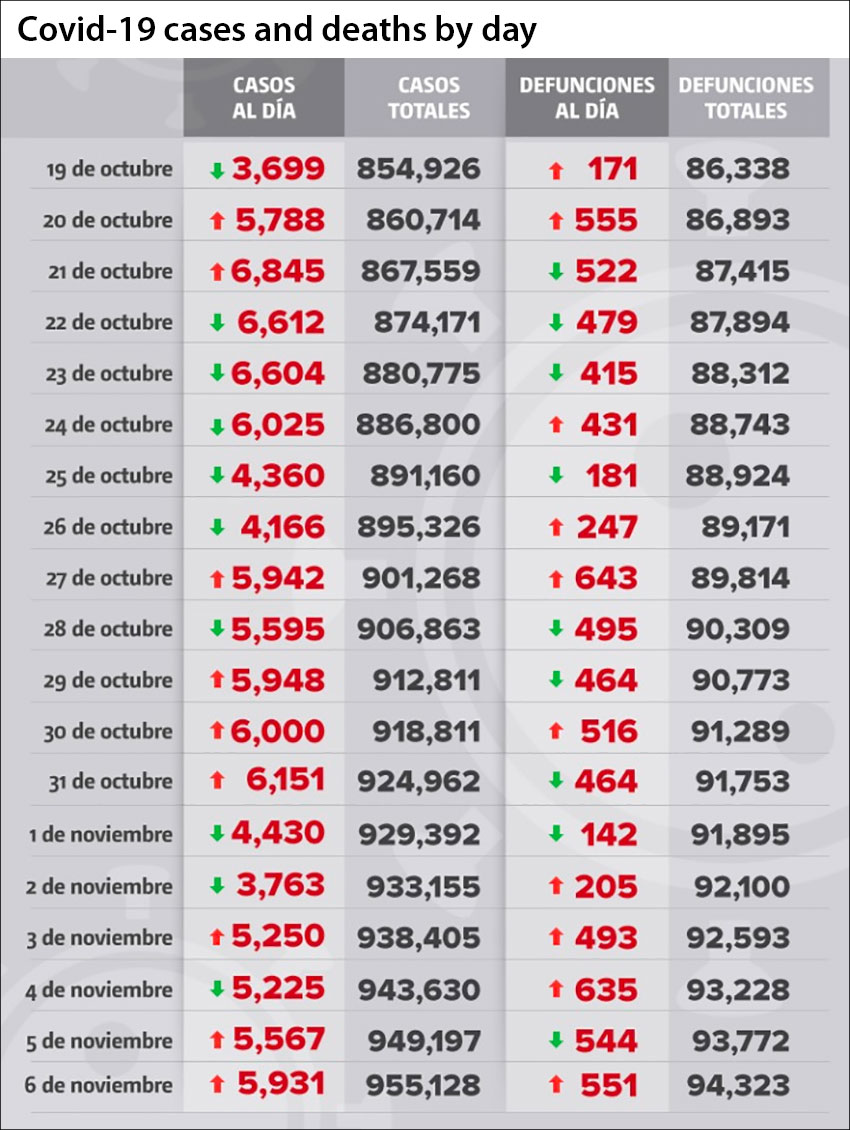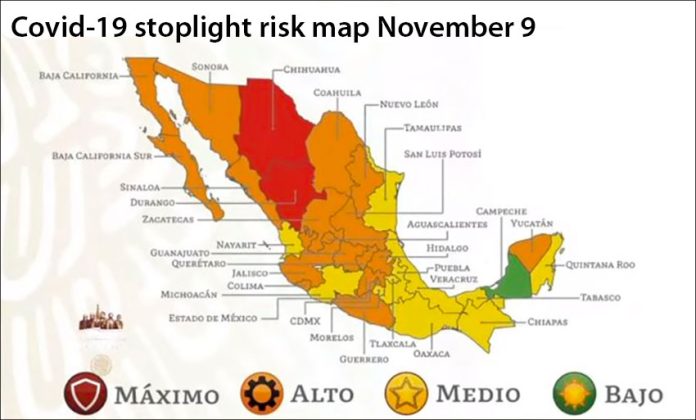The risk of coronavirus infection has increased in Sonora, Sinaloa and Guanajuato and decreased in Nayarit, Michoacán and Quintana Roo, according to the federal Health Ministry’s latest stoplight system assessment.
The Health Ministry announced Friday that the risk level in the first three states will be raised to orange light “high” from yellow light “medium” on Monday while it will be lowered from orange to yellow in the other three.
Sonora, Sinaloa and Guanajuato will join 15 states that are already orange on the stoplight map and will remain at the same risk level for the next two weeks.
They are Aguascalientes, Baja California, Baja California Sur, Coahuila, Colima, Guerrero, Hidalgo, Jalisco, Mexico City, México state, Nuevo León, Querétaro, San Luis Potosí, Yucatán and Zacatecas.
Nayarit, Michoacán and Quintana Roo will join eight states that are already yellow. They are Chiapas, Morelos, Oaxaca, Puebla, Tabasco, Tamaulipas, Tlaxcala and Veracruz.

There are two red light “maximum” risk states — Chihuahua, which switched to red two weeks ago, and Durango, which regressed to red this week.
Campeche remains the only green light “low” risk state in the country. The risk level in the Gulf coast state was reduced to green in late September and it has seen no changes since.
The Health Ministry uses 10 different indicators to determine the stoplight color allocated to each state including the Covid-19 effective reproduction rate (how many people each infected person infects), the weekly positivity rate (the percentage of Covid-19 tests that come back positive) and hospital occupancy levels.
It also recommends coronavirus restrictions for each risk level but several states ease and tighten rules according to their own criteria rather than that of the federal government.
The Jalisco government last week implemented tighter restrictions for a two-week period although the state’s stoplight system risk level had not changed, while Mexico City Mayor Claudia Sheinbaum announced slightly stricter rules on Friday even though the capital will remain orange next week.
New coronavirus case numbers have recently risen in Jalisco, prompting the government to introduce a curfew on commercial activities, while rising hospitalizations in Mexico City were the main reason behind the introduction of tighter rules there.
Nationwide new case numbers have also risen recently, increasing 26.5% in October compared to September. Last month was the second worst for coronavirus cases in Mexico since the start of the pandemic, with 181,746 new cases – an average of 5,863 per day.
The Health Ministry reported 5,931 new cases on Friday, increasing the accumulated tally to 955,128, and 551 additional Covid-19 fatalities, lifting the official death toll to 94,323.
The ministry estimates that there are currently 48,250 active cases across the country.
Mexico ranks 10th in the world for accumulated cases and fourth for Covid-19 deaths after the United States, Brazil and India, according to data compiled by Johns Hopkins University.
